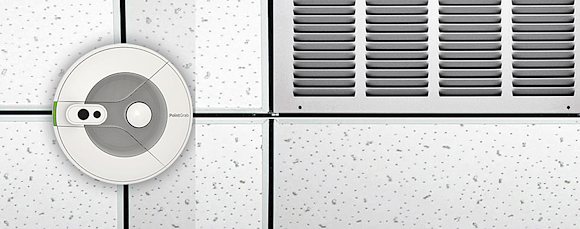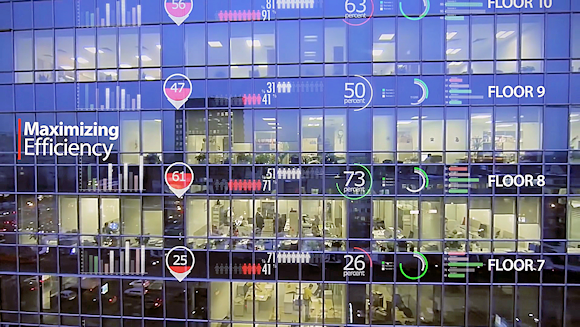
Basically, the Internet of Things (IoT) is a network of interconnected devices embedded with sensors, software, network connectivity, and electronics that enable them to collect and exchange data. Sensors, therefore, are key elements in the "things" of the IoT. They are a crucial part of what we conceive to be the next industrial revolution and will affect the way businesses, governments, and consumers interact with the physical world.
According to multiple studies, tens of billions of IoT devices will connect to the internet within the coming years. The potential impact of the IoT and its intelligent sensors is far-reaching and will encompass practically every single aspect of life. Early market segments that have adopted IoT solutions include transportation, utilities, industrial, smart buildings and agriculture.
IoT sensors, often called "smart sensors," extend far beyond the simple detection of events or physical changes in the environment, along with a corresponding output. They excel in both performance and functionality, generate massive amounts of data, provide more granular information, and distribute data throughout a connected environment.
Challenges Ahead
Despite the compelling value proposition of the IoT, the current pace of implementation is slower than might be expected. One of the prime concerns that impedes the adoption of IoT is security. The Internet connectivity of IoT devices make them natural candidates for cyber-attacks. Beyond the risk of shutting down systems and utilities, such nodes can also be vulnerable entry points for accessing sensitive information stored in data systems. Other significant concerns about IoT sensors are scalability and future proofing, i.e., the ability to remotely access the device for maintenance purposes and to add more functionality.
The IoT ecosystem presents another significant challenge. The variety of wired and wireless protocols and lack of standardization impose substantial constraints on the proliferation of IoT solutions. IoT sensors must therefore be interoperable in order to scale.
Another challenge often overlooked is the commissioning and installation processes of IoT devices. Manual processes are rather slow and can be prohibitively expensive. Built-in mechanisms that support streamlining the commissioning and installation processes are therefore mandatory for making the use of IoT sensors affordable.

Streamlined installation of an IoT device
With the evolution of the IoT, a new paradigm emerges that supports a decentralized architecture in which a great deal of analytics processing is doable at the edge (within the sensor unit) instead of in the cloud or at a central server. This computing approach, often called edge computing or fog computing, provides real-time intelligence and greater control agility while at the same time off-loading heavy communications traffic from the network. This on-sensor processing is especially relevant for image-based sensors, which are capable of generating an exceptional amount of valuable information.
Next page
Making Smart Sensors Truly Intelligent
In order to address the above concerns and challenges, smart sensors need more brains. In other words, more processing resources are necessary. This requirement inevitably translates into a higher unit cost, which is a significant drawback. However, in view of the declining prices of powerful processors and given the value they provide, this should not be an unbridgeable obstacle. Such processors are embeddable in the sensor itself or be part of a sensor hub, an external processing unit that serves multiple sensors.
Intelligent Sensors And Smart Buildings
In the particular segment of commercial buildings, the introduction of large-scale networking and digitization opens a completely new range of solutions and services for construction and building managers that are too compelling to ignore. This innovation can yield truly smart buildings that are efficient, save energy, optimize facility management, enhance safety and security, generate business intelligence, and improve occupants' experience. What makes these buildings smart is networked IoT sensors deployed across the entire building environment, sourcing a wealth of actionable data that are useable for making building-wide decisions in real time.

Outlining pertinent points of a Smart Building
In this regard, we are witnessing the emergence of a new breed of intelligent sensors for commercial buildings. These include miniature network-connected and image-based sensing devices, running state-of-the-art machine learning algorithms on a low-cost embedded ARM-based processor. Best-in-class sensors are highly secure and designed for indoor occupant analytics and energy savings, providing unprecedented precision in the detection of occupants' locations, count, and movements, as well as precise reading of ambient lighting and motion sensing.
Consistent with the edge computing approach, these smart sensors can work as standalone devices or integrate into other infrastructure appliances such as thermostats or lighting fixtures. These intelligent building sensors can perform all analytics internally, so images are never stored or transmitted over the network, fully protecting occupants' privacy.
Embedded support for diverse communication protocols make them interoperable across different IoT ecosystems. Furthermore, inherent capability for remote access allows for remote maintenance as well as firmware upgrades, thereby making them compatible with future technological advances.
In Summation
In view of the central role of sensors in the IoT, we may alternatively refer to the Internet of Things as the Internet of Sensors. For commercial buildings, new developments of core sensing technology are emerging, adding a significant drive to smart buildings.
Nevertheless, in order to be effective and provide a complete solution, other aspects that, along the lines of Regis McKenna and Geoffrey Moore, collectively comprise the "Whole product" of the sensor, need addressing as well. Recently introduced, image-based edge-analytics sensors indicate that such sensors are now within reach.
About the Author
Itamar Roth, is the Chief Business Officer at PointGrab. He brings over 15 years of start-up experience in business, marketing, and product development with an in-depth focus on embedded systems and imaging solutions. Prior to PointGrab, Itamar led marketing and product management for the enterprise division at Anobit (acquired by Apple) and managed the professional services both at TransChip (acquired by Samsung) and at the Samsung Israel R&D Center.
Related Stories
EnOcean Alliance brings self-powered wireless sensors to the cloud for interoperable IoT
A Testbed for Building Intuitive and Scalable IoT Apps
ULIS and Schneider Electric unveil new Advanced Occupancy Sensors